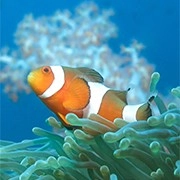Iconic Canada Goose

The Canada goose belongs to the family Anatidae in the order Anseriformes. It is characterized by its large size, long neck, and black head with white patches, creating a distinct contrast on the face.
The wings are large and dark-colored, while the back is brown, the chest and abdomen are lighter, and the lower abdomen and buttocks are white. Female and male geese have similar feather colors, but females are generally smaller.
The Canada goose is distributed in North America, Europe, northern Africa, Central America, Australia, New Zealand, and other regions. It inhabits areas such as bays and harbors. Canadian geese are known for their gregarious nature, sometimes flying in a diagonal line or V-shaped formation during migration. They primarily feed on grass and aquatic plants' tender shoots, leaves, and stems, occasionally consuming plant seeds and roots.
Lynx resurgence: Triumph over extinction through conservation programs.
The mystery of the flamingo's one-legged stance.
Cats have often been perceived as arrogant and aloof, but in reality, cats are not inherently antisocial creatures.
Rabbits are very cute little animals, but they are also very fragile little animals.
Surprising ways to find lost cats and kittens.
Tiny butterflies have many skills and specialties.
The breeding season for Canada geese is from March to August, with each nest containing 4-7 eggs. The incubation period lasts 25-30 days, and the parent birds care for the chicks for 40-73 days. The lifespan of Canada geese can reach up to 24 years.
Canada geese are the largest species in the order Anseriformes. There is minimal sexual dimorphism, with males being slightly larger than females. They have a 76-110 cm height and a wingspan of 1.3-1.7 meters. Despite small differences between genders, they appear similar, with long necks, varying shades of brown-gray feathers on the back, and typically white or creamy white coloring on the abdomen and buttocks.
The head and neck are black, with a prominent white band extending from the throat to the intermandibular region. The tail is short and black, with white undertail coverts. Seven subspecies differ in head markings, size, and degree of feather darkness.
Canada geese are social birds in lakes, swamps, and slow-flowing rivers on plains. Like other geese, they are herbivores, consuming aquatic and terrestrial plants, including grasses and crops, during migration or winter.
Around the age of 2, Canada geese begin to form pair bonds, often staying together for life. If one partner dies, the surviving goose may find a new mate. Females lay 4 to 8 eggs per clutch, and both male and female protect the nest during incubation, with the female spending more time. They lose their flight feathers during this period and regain the ability to fly only after hatching, which takes approximately 25 to 28 days.
Adult Canada geese often migrate in a straight line, led by one older individual at the front, with the rest following behind. They defend their offspring from threats, including other birds and humans. Canada geese form "crèches," groups consisting of several adult geese and a flock of goslings, which remain together until spring migration when the young geese return to their birthplace.
The prominent species is common in North America, particularly in Canada and the northern United States. Nests are usually situated in elevated areas near water, sometimes even on beaver lodges, and the eggs are laid in depressions with vegetation. Large populations of Canada geese are maintained in the Great Lakes region.
Like many geese, Canada geese undertake migrations, with wintering areas often located in the United States. During migration, they form the iconic V-shaped flying formation, covering approximately 2400 kilometers in 24 hours. Some Canada geese may choose not to migrate to regions with a mild climate, such as the Pacific Northwest, where the absence of predators allows them to stay year-round.

The Canada goose is renowned for its colossal size, distinctive feather markings, and remarkable migratory abilities. Widely distributed across North America, Europe, Africa, Central America, Australia, and New Zealand, these geese showcase the breathtaking beauty of the natural world through their iconic V-shaped flights and striking black-and-white plumage.
As herbivores, they thrive in plains, lakes, and rivers, exhibiting familial solid and social bonds. The life cycle of the Canada goose encompasses breeding, incubation, and migration, adding rich layers to the tapestry of the natural order.

 · Animal Team
· Animal Team